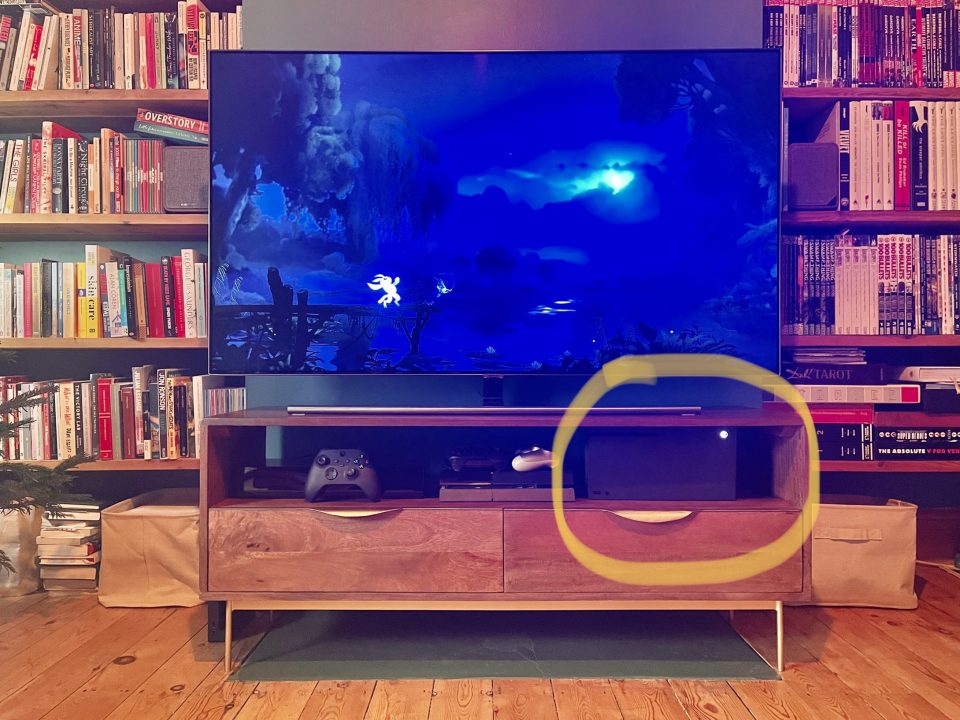Xbox Series X: A powerhouse machine with bags of potential

There was a time when the launch of a new games console represented a gigantic leap forward – when gamers could expect to see and play titles in ways they hadn’t even conceived. The jump from Nintendo’s SNES to the N64, for instance, ushered in the era of 3D gaming, changing the course of the entire industry.
Today’s console releases are no less impressive, but their benefits are less in-your-face. Over the last decade consoles have shifted from once-in-a-generation boxes to iterative machines that are likely to see two or three incremental upgrades over their lifetime. The Original Xbox One, for instance, was a huge, ugly thing that came bundled with the now-defunct motion-sensing Kinect. That console was streamlined with the Xbox One S, and eventually updated to the slick, super-fast Xbox One X.
This iterative approach to console design is reflected in Microsoft’s increasingly monolithic naming conventions, with the Xbox One X now superseded by the Xbox Series X – gone are the days of Dreamcasts and Mega Drives.
So there was something slightly anticlimactic about booting up the new Series X and finding a home-screen that’s virtually identical to the one on the console I just unplugged. Indeed, if you use the Xbox app when you’re setting up, even your saved “pins” will be just where you left them; Netflix, Amazon Prime, Dark Souls, all there waiting for you, just as you left them.

The first big difference, however, is noticeable before you’ve even plugged the Series X in. It’s built as a “tower”, perhaps a nod to the fact Microsoft sees this machine as a rival to high-end gaming PCs. For me and many others out there, this provided a slight problem: my TV unit was chosen to be able to fit the Xbox One X, the PS4 and the Samsung Box that lives beneath the TV. The Series X was too big.
My first thought was that I’ll have to get a new TV unit, which means I’ll have to rethink the whole living room, by which point I may as well just move to a different house. Hell, I might as well emigrate. Thankfully removing a couple of screws from a hidden bracket meant it could slide into the unit without a millimetre to spare, although there’s no way I’m going to get the ludicrously thicc PlayStation 5 in there too.
The Series X is a handsome beast, designed to blend into the background, a minimalist box that will subtly compliment your TV without drawing attention to itself (unlike the bizarre, finned PS5, which broadcasts “I’m a gamer!” through a loudhailer).
Booting up the Series X is a little bit like getting a new iPhone: you know you have in your hands an exceptional piece of kit, something that will give you outstanding performance for years to come, perhaps even representing the finest example of its kind on the market. But in practice, it feels very much like the last one. Software that can take full advantage of all that power simply doesn’t exist. Yet.
A new console generation always gets off to a slow start, though, and Covid’s impact has further slowed the development of new games. You will notice subtle improvements in many existing titles, from Red Dead Redemption 2 to The Witcher 3. You’ll find frame rates remain silky smooth where before they might have stuttered during action sequences. It can give you 120 frames per second if you have a display to support it (which I don’t). Loading times are four or five times faster, meaning you’re immediately plunged into a game without twiddling your thumbs for a minute or more.
But it’s only on the handful of fully optimised games that the Series X’s potential becomes clear. Forza Horizons 4 will deliver 60fps at 4k, and my goodness it’s beautiful. Gears 5, too, sees a significant boost, again hitting 60fps at 4k. And Ori and the Will of the Wisps – capable of running at 120fps – is mind-blowingly beautiful on the Series X.
It also runs like a dream – I booted up the Series X after returning to Bloodborne on the PS4, and while the latter sounds like a jet plane that’s just sucked up an entire flock of geese, Microsoft’s latest is virtually silent. It does expel quite a bit of heat from the grill, however – not so much that it feels problematic, but you’ll need to leave a decent amount of space if you want to avoid problems down the line (in contrast, I stacked my PS4 on top of the Xbox One X for years with no problems).
Slightly disappointing is the new controller, which you could be forgiven for confusing with the old one. There’s a matt finish here and a concave D-pad there, but it’s basically the same old design – no bad thing, given it was already best-in-class, but it would have been nice to see improvements beyond incorporating USB-C (in fairness, the fact it doesn’t out-class the Elite 2 controller I splashed £160 on a few months ago is a bit of a relief).
So far so good – but as I said, really pushing the hardware is tough right now. Unlike the PS5 (oh, Demon’s Souls!), there’s a paucity of exclusive new titles, especially since the new Halo was pushed back by a whole year. But the games will come, and when they do, the Xbox Series X is a stunning machine on which to play them – so much so that the asking price of £449 feels like a bit of a steal.
